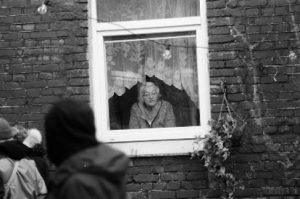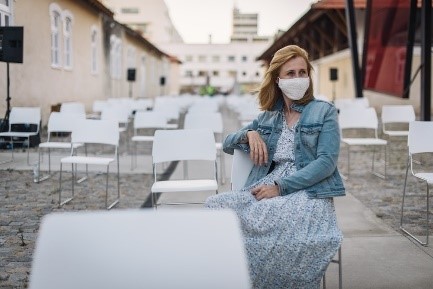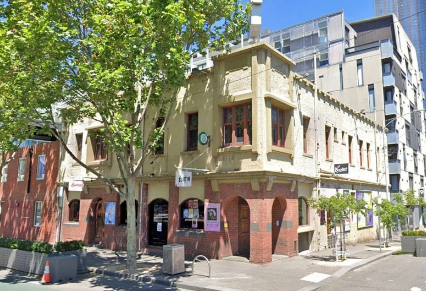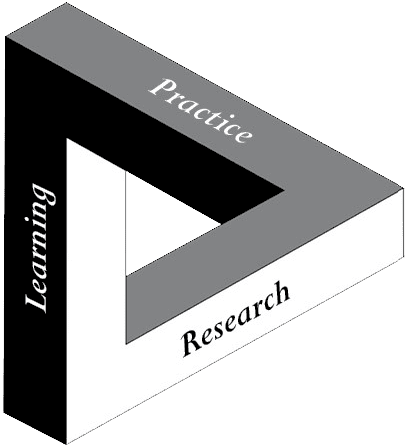The COVID pandemic has brought into sharp relief humans’ complicated relationships with place and space. ‘Lockdown’ has separated many of us from the places and homes where we normally freely would visit or spend our time, along with the services and amenities on which we have come to rely, and the people we love who live there. For many, ‘home’ also became repurposed as an office, school and quarantine station.
During the height of restrictions, our homes may have devolved from being our castles to our prisons. These private places, which we normally associate with refuge, nesting and recovery, came to remind us that our surrounding public ‘third places’ were unsafe, and that we might be contaminated by the people, surfaces and air contained within those spaces.
Citizens of developed nations, so used to unfettered global travel and tourism, have found themselves unable to go anywhere — and sometimes marooned abroad and unable to get back home. In Australia, many have had an unwelcome taste of the ‘detention’ policies usually metered out to people who have arrived at Australia’s borders seeking asylum and refuge.
In July 2020, residents across nine of Melbourne’s high-rise public housing towers suddenly found themselves confined to their apartments, with police called in to prevent people from entering or exiting the buildings. Many of these residents had fled autocratic regimes to find a safe haven in Australia. They reported “feeling anxious, fearful and as if they were being ‘treated like criminals’”. A subsequent Victorian Ombudsman inquiry revealed that some residents were forced to sleep in their cars. Some ran out of food and supplies, “while others reportedly self-harmed”.[1] This state-sanctioned intervention may re-open post-traumatic stress responses and be felt for a long time.

During COVID, people have been reminded of the healing power of contact with nature, and how important it is to spend time outdoors surrounded by trees and plants. Access to green space and opportunities to grow food and flowers has been shown to assist psychological healing for people seeking asylum – and has been critical to ensuring food security during COVID. During the pandemic, a great many people have relearned to treasure their access to public open spaces: to parks, playgrounds and piazzas. (In Indian cities, people suddenly could see blue sky.)
In 2019, I was privileged to work with the People and Parks Foundation on a program, Live Nature Wise, which highlights the importance of reconnecting people to green and blue spaces. As we learn to coexist with this virus, how can we improve and protect everyone’s access to nature?
The pandemic itself is thought to have stemmed from the impact of humans’ accelerating incursion into non-human habitat, and the interactions that occur between our species and others as we colonise their places. This is a good time in our civilisation, then, to explore humans’ relationship to place.
In their excellent discussion in ‘Re-placed’ – Reconsidering relationships with place and lessons from a pandemic.), Patrick Devine-Wright and his colleagues have identified a wide range of policy-relevant questions that COVID challenges us to explore. Some of these are listed below.
- How has the pandemic altered our relationships to ‘home’? In what new ways do people make and ‘unmake’ their sense of home (for example, reconfiguring it into a school and workplace) in the pandemic?
- How might the pandemic be intensifying forms of inequality, precarious existence (crowding, safety, light, fresh air) and residential segregation? In what ways has it reinforced and/or contested existing geographies of privilege?
- In what ways has the pandemic displaced people from their homes and other meaningful places, both physically and psychologically, and who is more vulnerable to such displacement?
- How has the pandemic changed the design and planning of urban public spaces and what are the impacts of these design and policy changes for place experience?
- How are definitions, meanings (moral, political, legal) and uses of public space changing, and how do these impact on public behaviour?
- How are these changing meanings interacting with people’s ‘right to the city’ and fuelling the construction of a renewed conception of “the good citizen”?
- What are the consequences of extended periods of home confinement on health and wellbeing, particularly for children and vulnerable adults?
- How has the pandemic, and associated lockdowns, altered discourse and behaviour in relation to recreation and residency, specifically between urban and rural areas and new norms of teleworking? Could this lead to new norms that positively respond to the climate emergency?
- How does the blocking of sensory input during the pandemic due to a lockdown, forced immobility, and virtual social encounters affect our experience of place and the meanings assigned to places?[2]
I invite you to reflect on these questions throughout this series as I explore research that unpacks ‘sense of place’.
Building on a location’s deep ‘sense of place’ will require us to acknowledge and incorporate how different peoples forge their identity through their interaction with that place, and how people form deep cognitive, emotional, cultural, and spiritual bonds with that place. I will conclude with a question: is our free-market, colonial, greenfield developer society willing or able to acknowledge people’s emotional dimensions to place?
References
[1] https://www.abc.net.au/news/2020-08-25/coronavirus-melbourne-public-housing-tower-shutdown-inquiry/12589372
[2] Devine-Wright, P., et al. (2020). ‘Re-placed’ – Reconsidering relationships with place and lessons from a pandemic. Journal of environmental psychology 72. Available: https://doi.org/10.1016/j.jenvp.2020.101514




